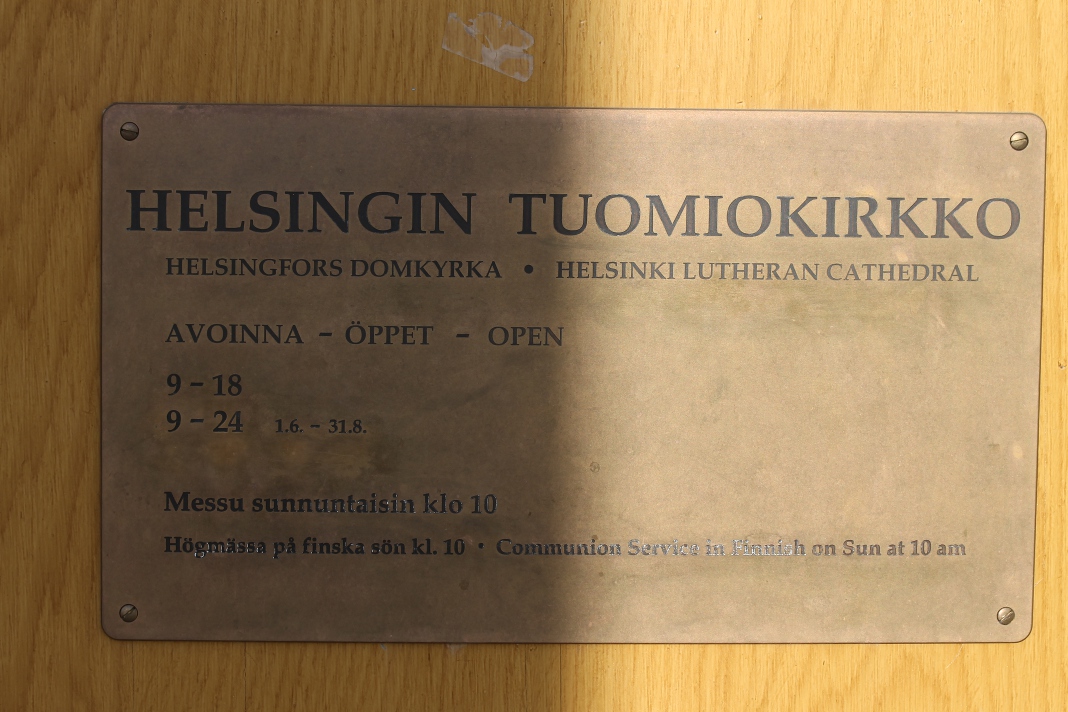Helsinki Cathedral
The dominant urban landscape and symbol of the city is Helsingin tuomiokirkko, the main church of the Helsinki Diocese of the Evangelical Lutheran Church of Finland.
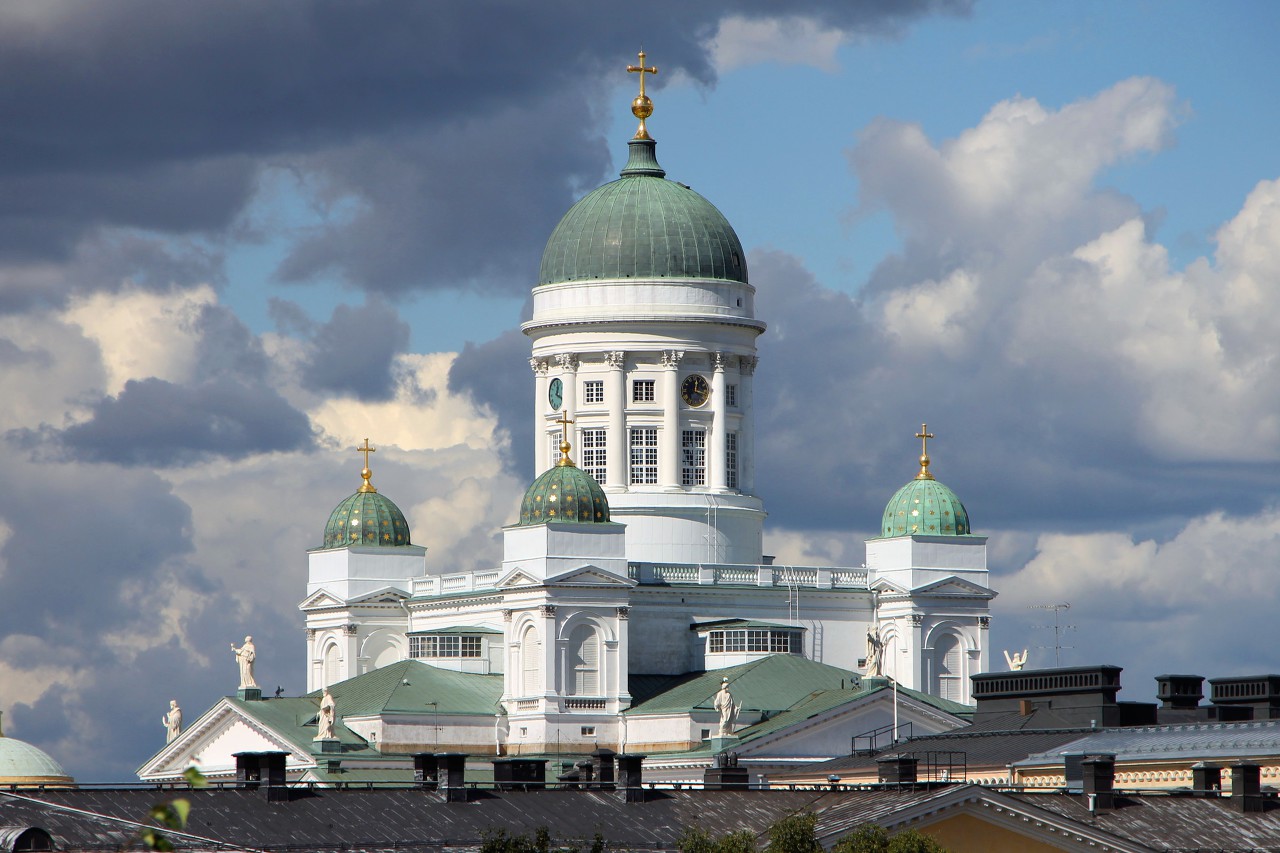
On April 8, 1812, by decree of Emperor Alexander I, Helsingfors became the capital of Finland. Then it was a very small town, with only three and a half thousand inhabitants and 77 houses, and even then a third of them were destroyed by the fire of 1808. On the same day, the Russian monarch approved the city plan, according to which a Lutheran stone church was to be built. However, construction began much later due to lack of funds. In 1814, the source of funding was found - under the new customs rules, 15% of the cost of imported salt was supposed to be given to the construction of the church. Four years later, German-born architect Karl Ludwig Engel began designing the building.
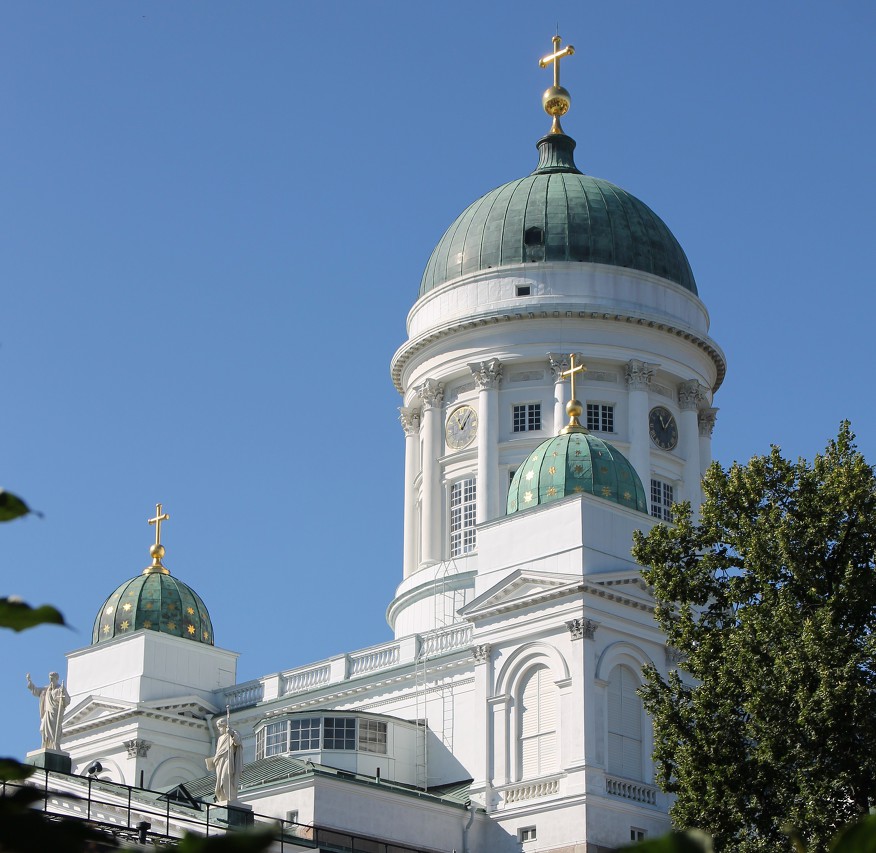
"Salt" money was enough only for the project, the construction of the building was paid for by the next Russian Emperor, Nicholas I, allocating 2.6 million rubles. Of the allocated amount, one million was intended for the construction of the church, the rest for the restoration of Turku after the fire. Construction began in 1830, and in 1940, after Engel's death, work was led by E. B. Lohrmann, who made significant changes to the original design. The church was officially opened on February 15, 1852, receiving the name of St. Nicholas, the patron saint of the Emperor. The people also called it simply "St. Nicholas Church", that is, built by the Emperor Nicholas. During the 1917 revolution, the church was taken over by anarchists and held meetings there. In the same year, Finland gained independence, and in the wake of patriotism, the Russian name was changed to "Big Church". In 1959, the Diocese of Helsinki was founded and the church became known as the Helsinki Cathedral.
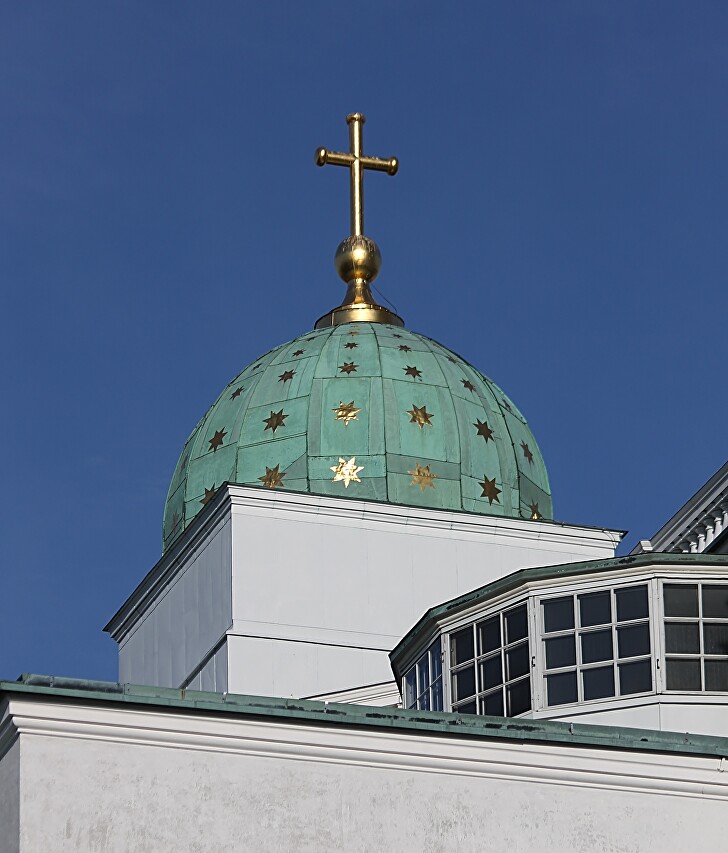
The church is built in neoclassical style, in plan it is an equilateral Greek cross, the building looks identical from all sides. The Kazan Cathedral in St. Petersburg was taken as a basis, in particular, the cathedral in Helsinki repeats its high central tower with large windows and a dome. The clock was made by the hereditary master Juho Könnin, and it served until 1902, when it was replaced by electric ones. The original movement is still in use at the Finnish Watch Museum in Espoo. The original design called for placing the bells in the central tower, but Lohrmann did not dare to hang heavy bells on the thin walls of the tower, and built four belfries in the corners of the building.
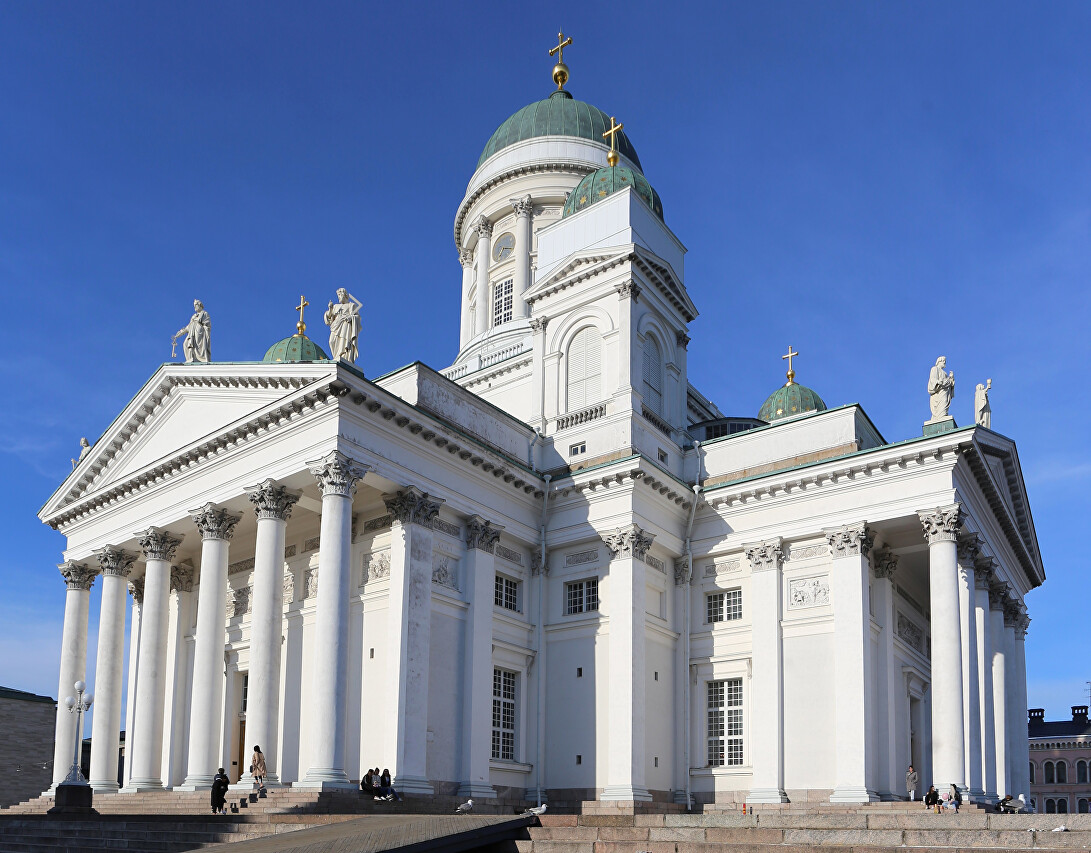
The roof of the building is decorated with statues of the apostles, do not be deceived by their color - they are made of zinc. This is the largest collection of zinc sculpture in the world. During the renovation of the church in 1996-1998, the statues were painted white, which is more in harmony with the snow-white walls of the building. By the way, in fact, this is not pure white, but a very light blue, and different shades are used in painting the building at different levels. This makes all the elements of the church appear perfectly white from any distance and angle. A similar technique is used when painting the Eiffel Tower in Paris.
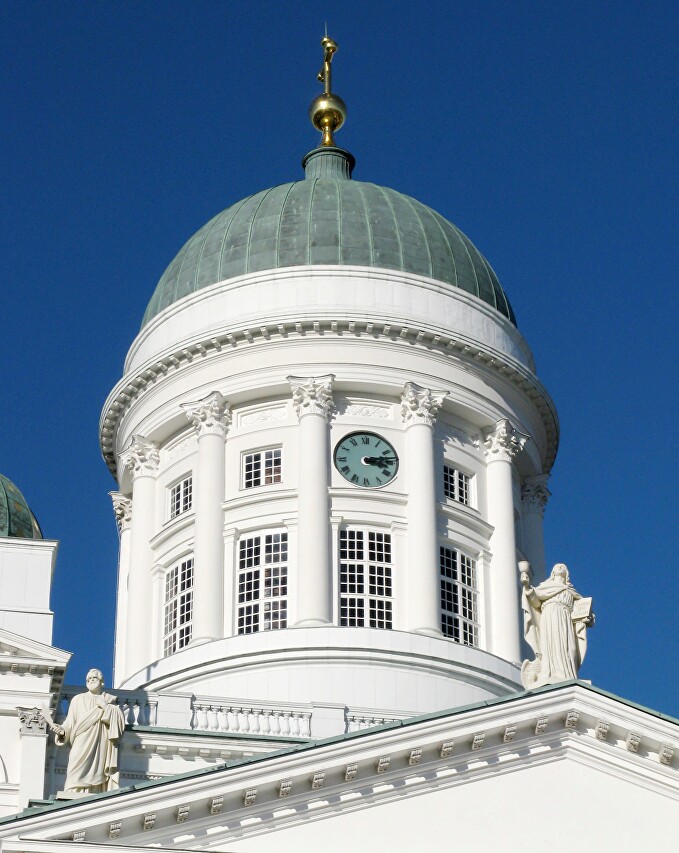
The pediment of the main portal is crowned with a sculpture of John the Evangelist (Johanneksella). The apostle holds in his left hand an open book with the inscription Euan / ge / lium-the Gospel, as he is credited with authorship of several books of the New Testament. In his right hand is a cup of poison, which he drank according to the verdict of the Roman court, which miraculously did not cause the saint any harm. John the Evangelist is depicted as a young man with comely features and is often mistaken for the Holy Virgin Mary.
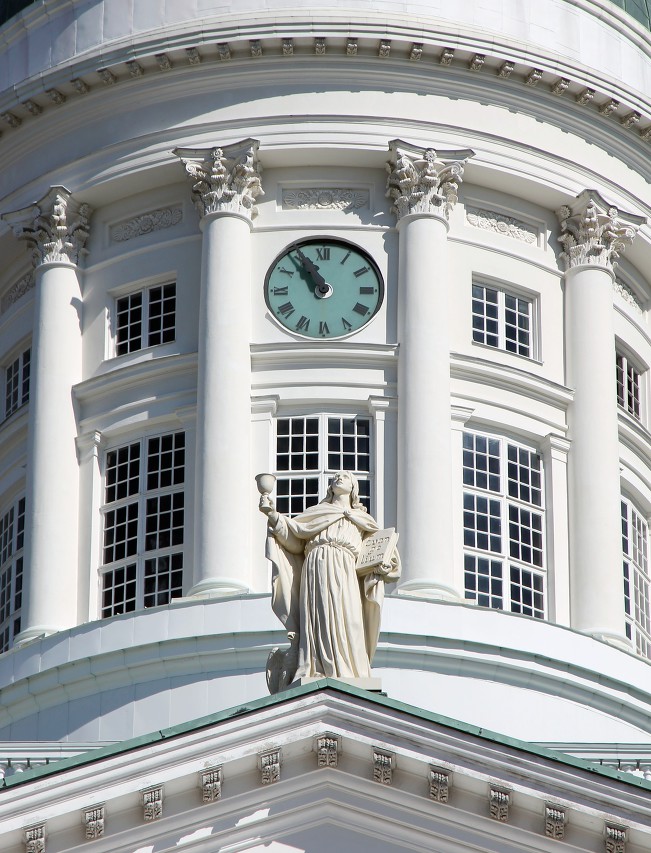
Saint Tuomas (Fin. Tuomaan, Saint Thomas), patron saint of engineers and builders, holds a square in his hand. This apostle is especially revered in Finland, and the annual Christmas Market in the Market Square and Esplanade is named after Saint Tuomas.
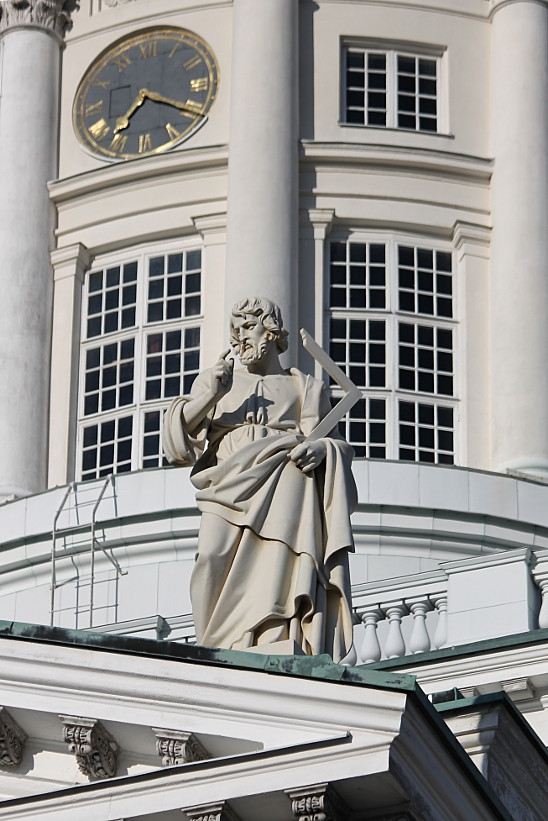
Saint Peter (Fin. Pietarilla) with the unchangeable keys to the Kingdom of heaven.
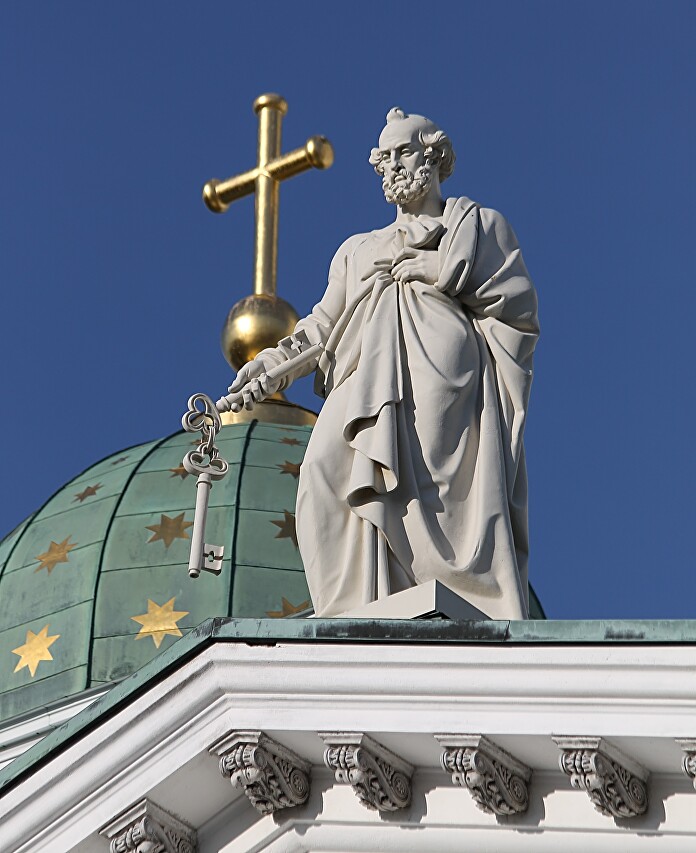
The Apostle Simon the Canaanite (Simon Kananeus) is depicted with a tool from which he was martyred - he was sawn alive.
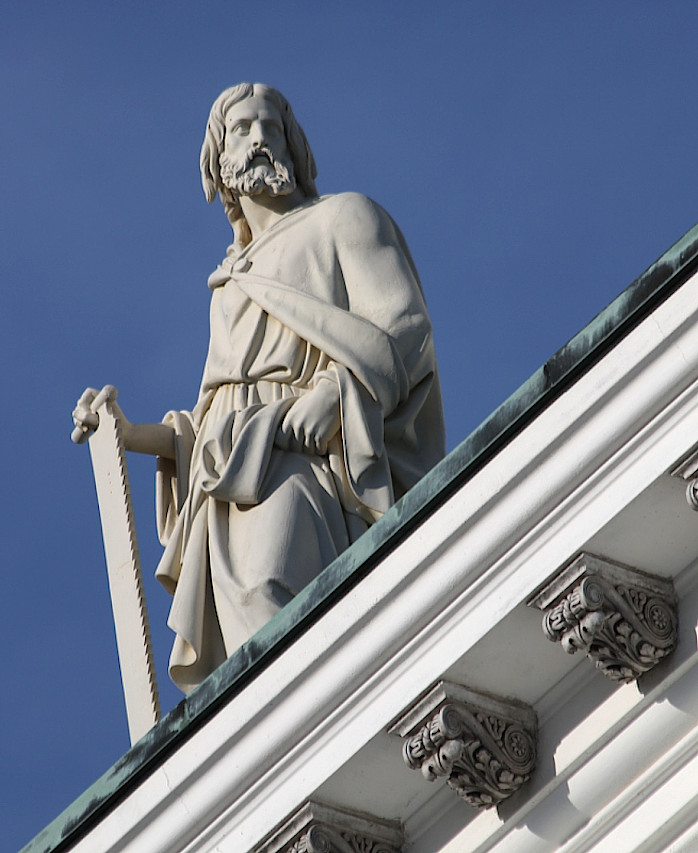
Saint Matthias (not to be confused with Saint Matthew!), holding the halberd with which he was killed. In different countries, it can be a sword or an axe, although the canonical version says that it was stoned.
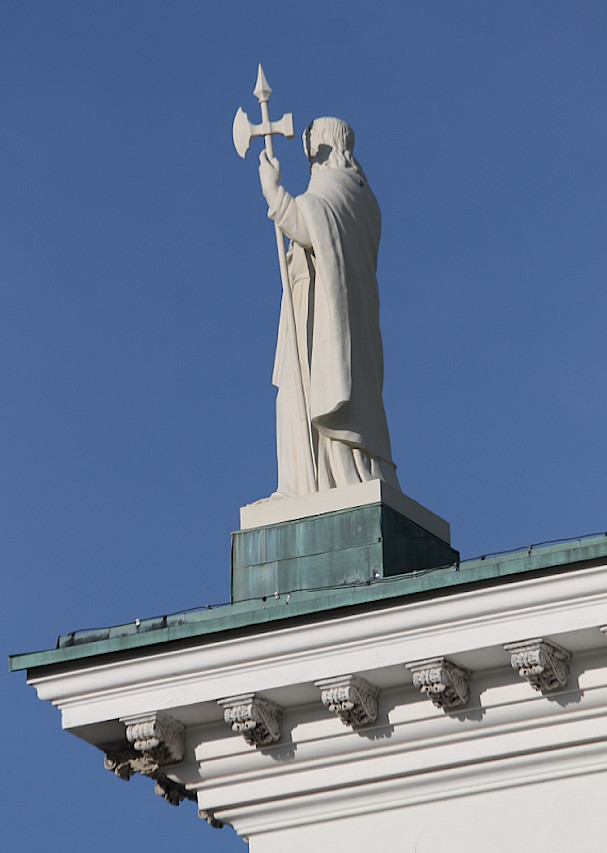
On the walls of the cathedral you can see numerous bas-reliefs of religious themes.
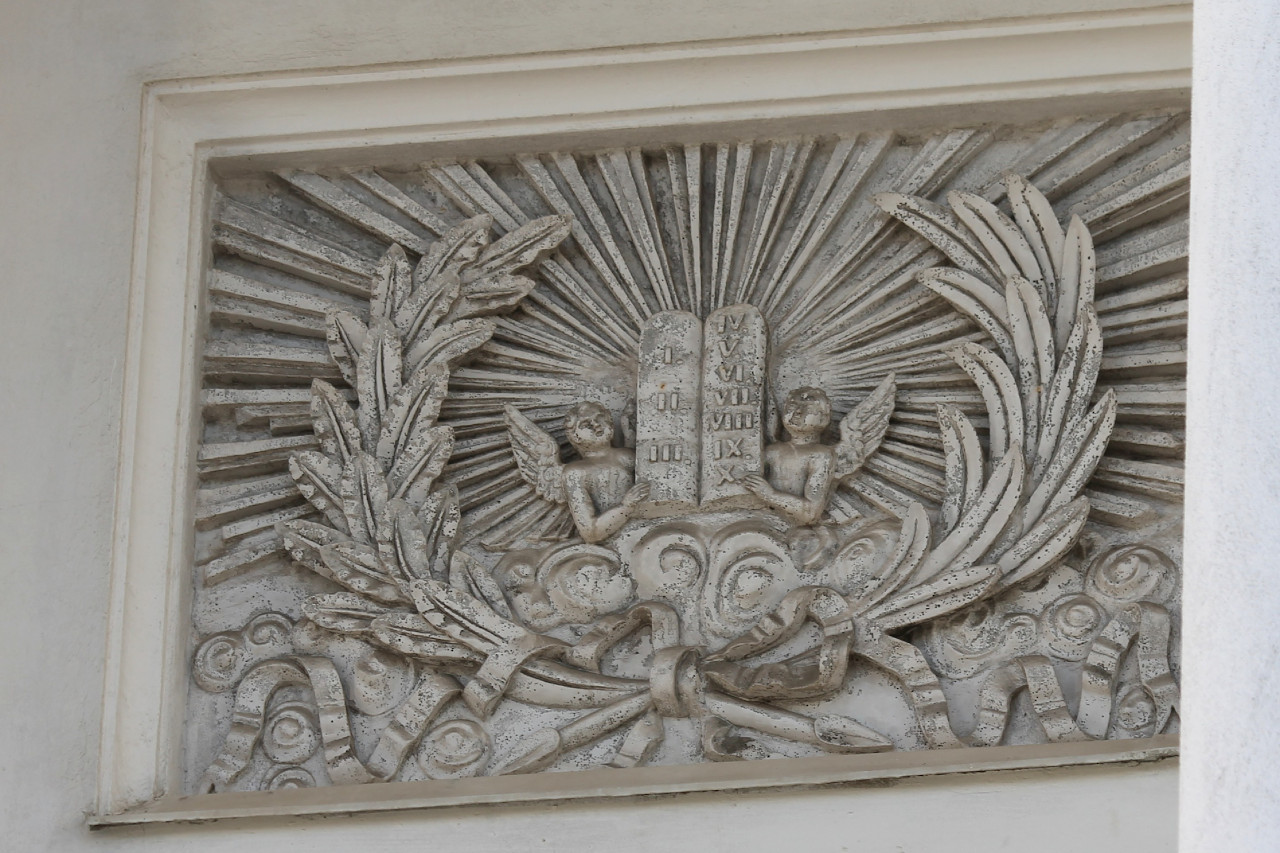
This bas-relief depicts a story from the Passion of Christ called "Prayer for the Chalice".
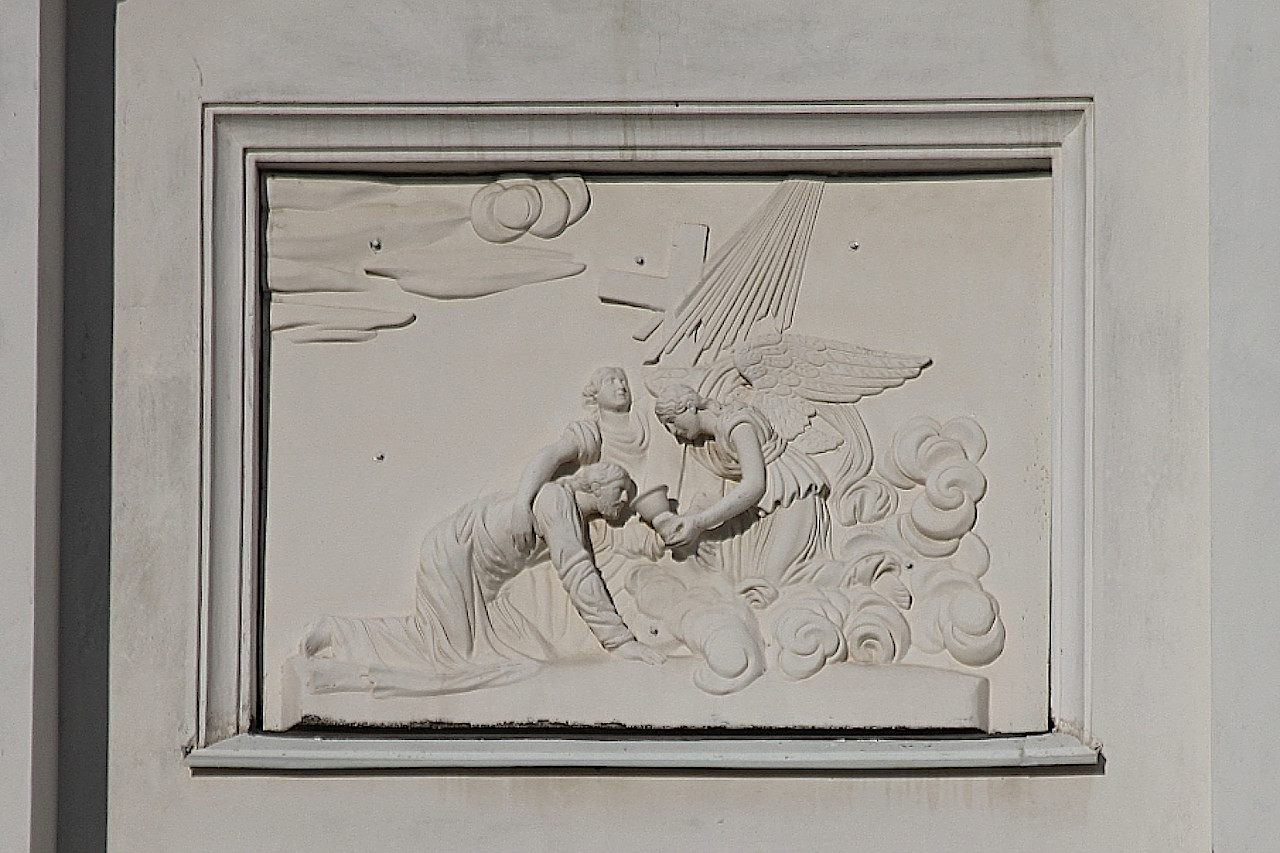
The Holy Grail, or Grail Cup, in which Joseph of Arimathea collected blood from the wounds of Christ crucified on the cross.
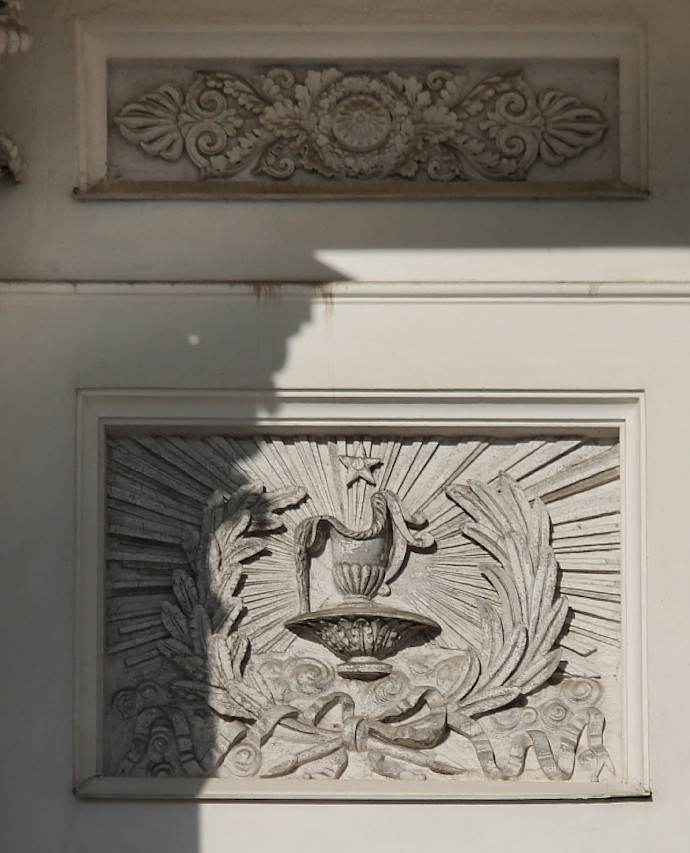
A scene depicting the Visit of the Magi. Three Magi (in some countries they are called Priests, Magicians or Kings-Magicians) brought gifts to the newborn Jesus, the way to which they were shown by the Star of Bethlehem.
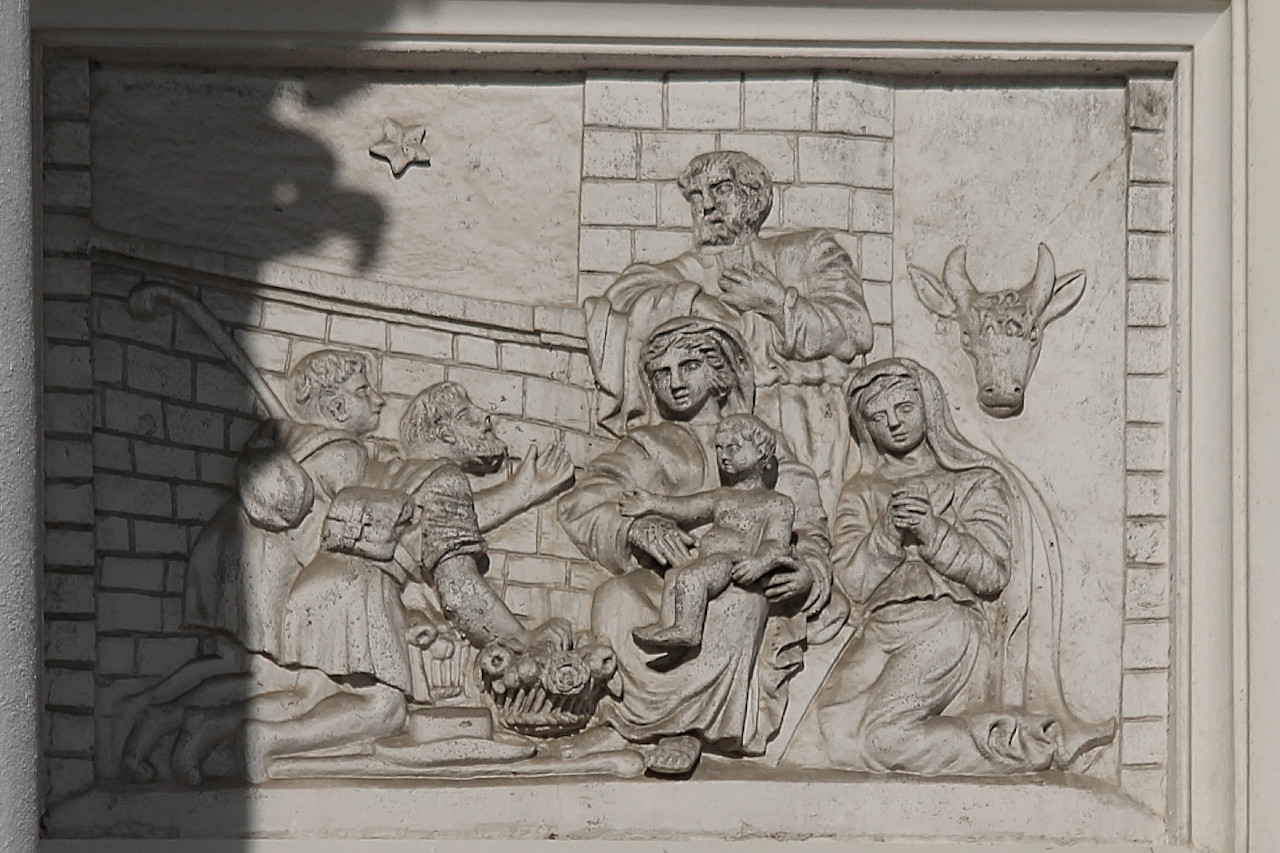
The cornices are decorated with Masonic symbols. It should be noted that Freemasonry has a great influence in the Nordic countries.
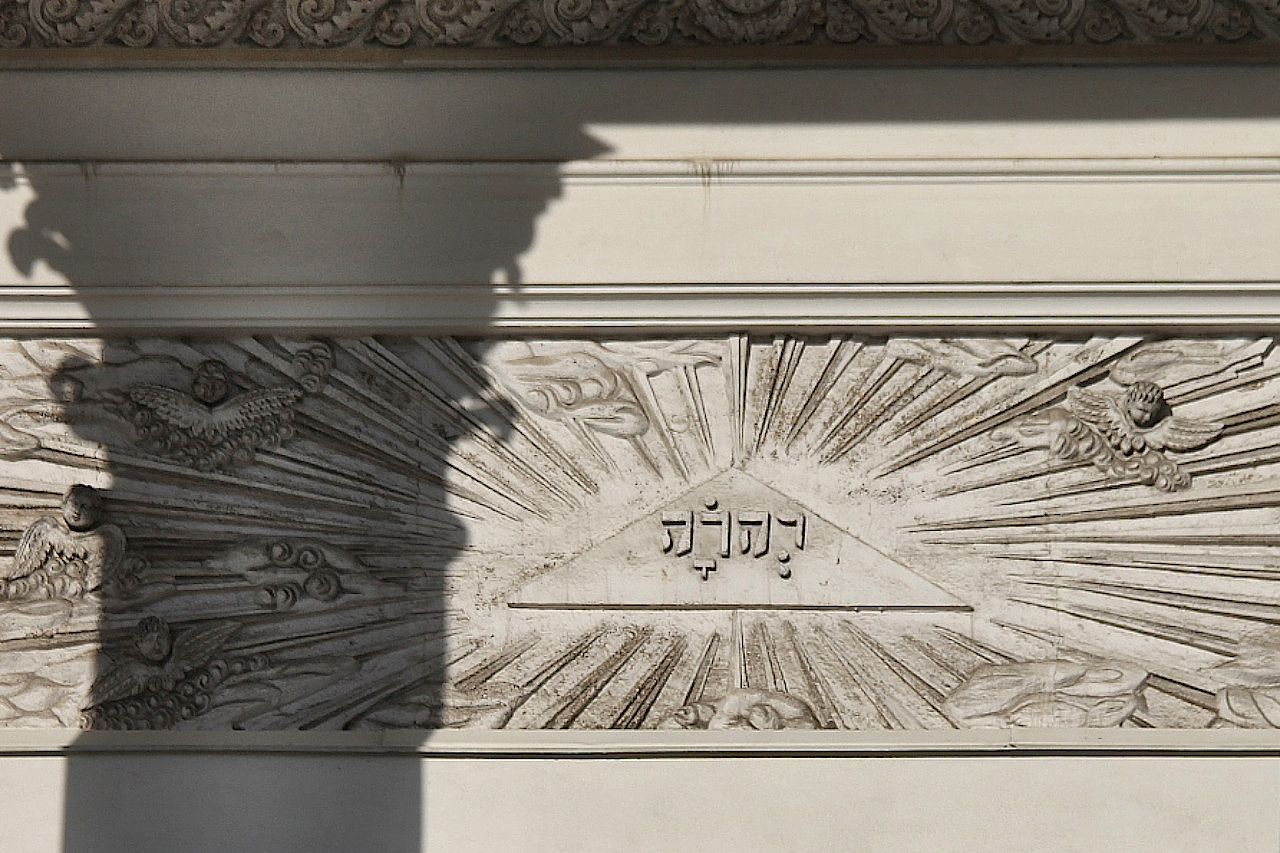
The All-seeing Eye, a Masonic symbol that represents the Great Architect of the universe overseeing the work of freemasons. This sign is considered by ignorant conspiracy theorists to be a symbol of the secret government. I would like to remind you that Freemasonry actually encourages spiritual development and charity and has never pursued the goal of seizing power.
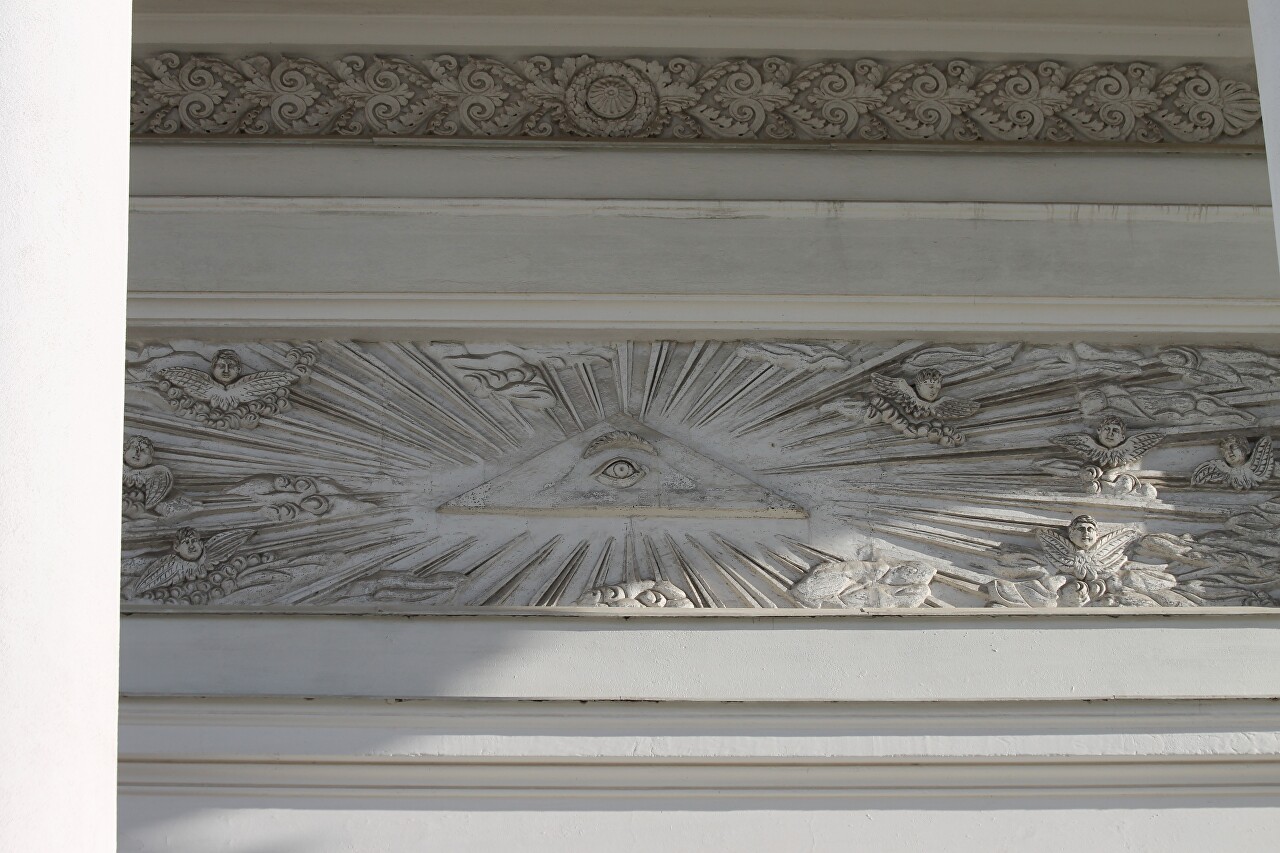
A wide staircase leads up to the main facade of the cathedral, offering a panoramic view of the entire Senate Square.
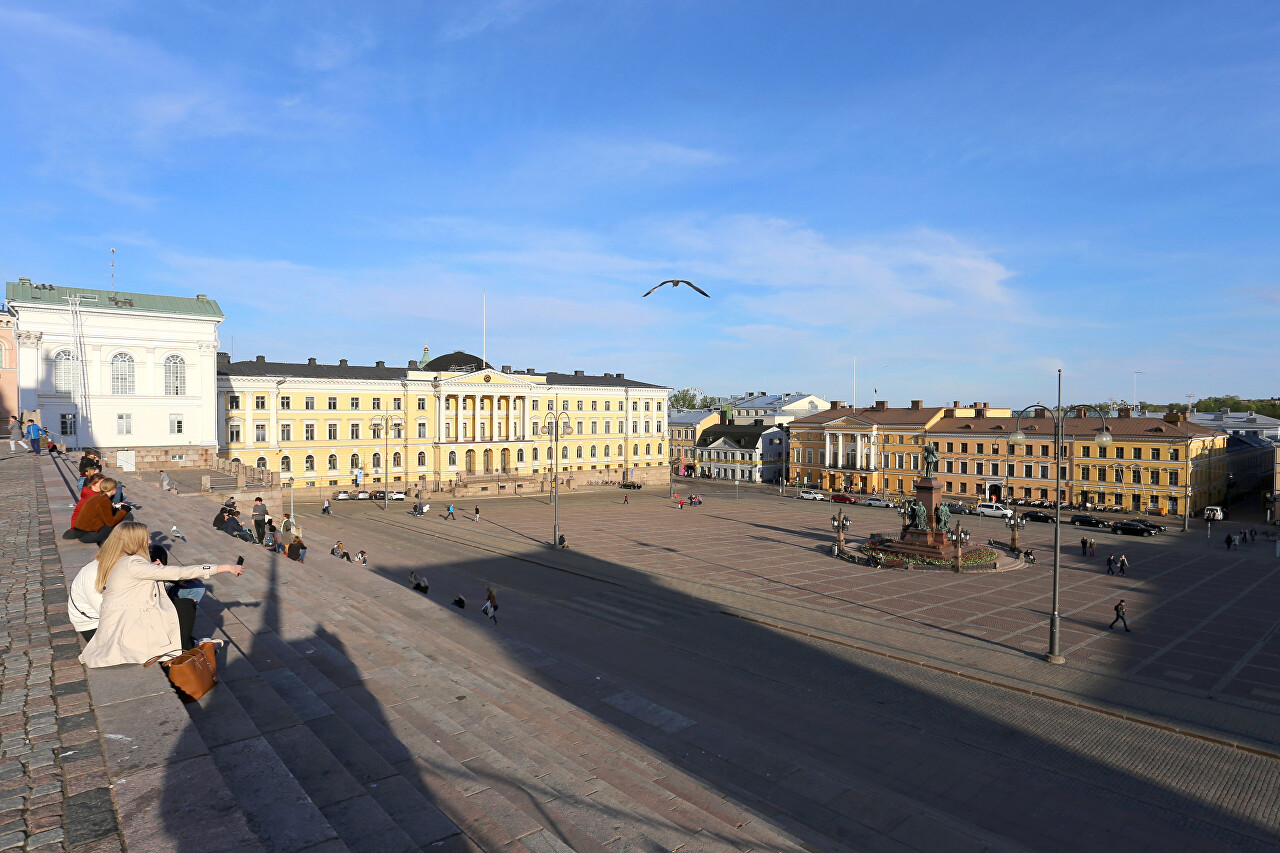
The interior of the church is small, and the decoration is quite modest. The cathedral is open to the public from 9 to 18 hours, in the summer months until midnight. During the year, the cathedral is visited by up to half a million people, half of them tourists.
